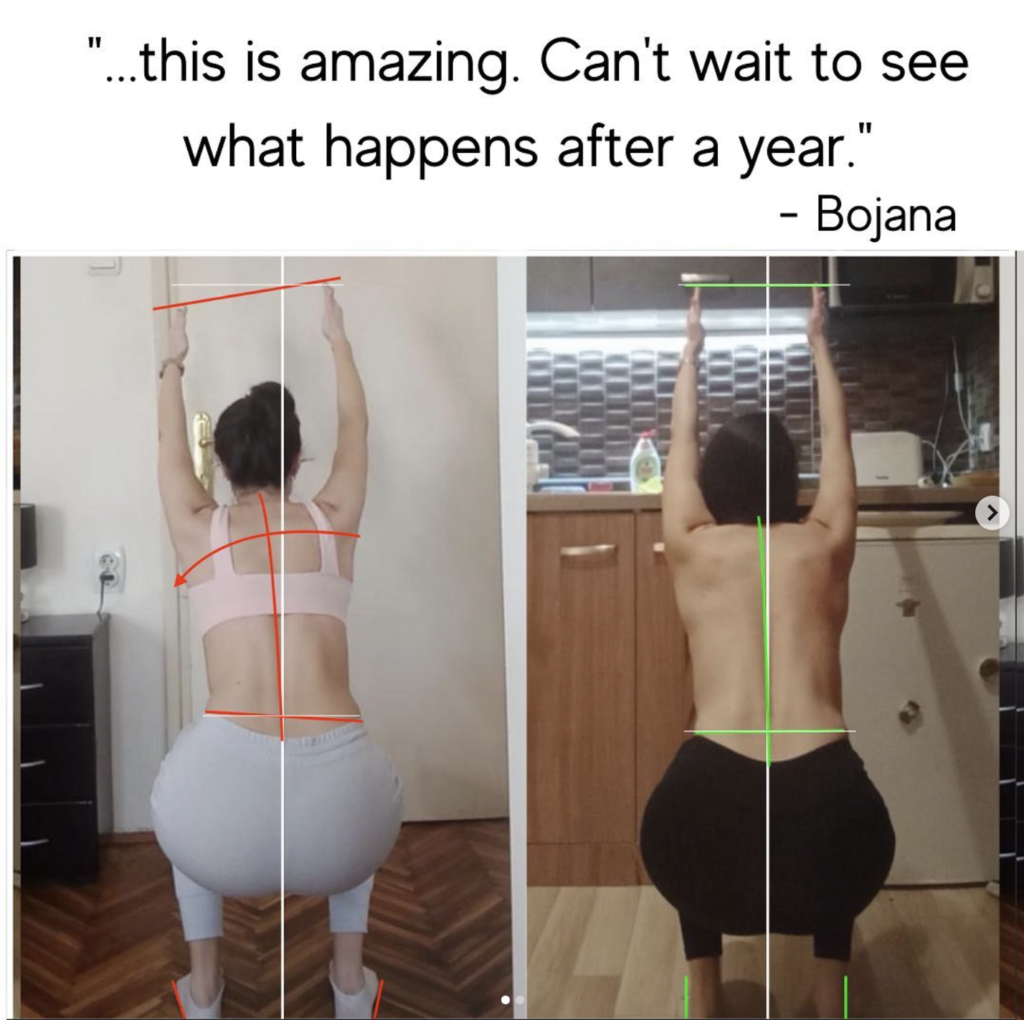
A photo is worth a thousand dollars.
The first thing I teach people in The Pain Assessment Toolkit is how to take photos of their movement.
I want you to watch what your whole body does when you move.
When you watch yourself move you will see your problem immediately in a different way.
When you move, there are so many things to feel and think about. It can feel like an impossible task trying to string together the right words to get the help you are looking for.
It’s often so much easier looking at what happens when you move compared to trying to describe and define it.
This is why a photo is worth a thousand dollars; it shows what you can’t describe and what you can’t feel. A photo reveals the underlying problem.
Let me explain.
The photo on the left shows a member doing our squat assessment. She injured her back 6 years ago in the gym and has had problems since.
Instead of reinforcing the idea that her back pain was the problem; I taught her how to prop her phone up on a chair and record how she moves.
After she recorded her movement, I showed her what ideal movement should look like. I then asked her to observe her photos to gather some basic yet crucial information.
No wonder why her back hurt and wan’t getting better for 6 years. Every time she moved her left pelvis would go up, and the upper body would shift to the left. Her whole body would also twist clockwise.
In other words, the right side and left side weren’t working well together. Her back was stuck in the middle of this tug-of-war with every movement. It makes perfect sense why she has scoliosis as well. The spine cannot stay straight when the body around it is tugging the spine left and right.
After completing The Pain Assessment Toolkit, she enrolled in The Movement Program. The Movement Program sh her how to resolve the imbalances and movement problems.
I want to help you in the same way I helped her. If you are having any movement problems, imbalance, or pain, click the link in my bio to do exactly what she did. Take the first step and buy The Pain Assessment Toolkit to look at why you are feeling the way you are when you move.